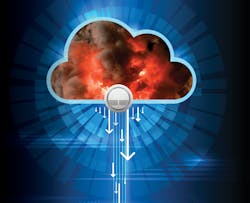This article originally appeared as the cover story in the October 2023 issue of Security Business magazine. When sharing, don’t forget to mention Security Business magazine on LinkedIn and @SecBusinessMag on Twitter.
In 1998, only 0.6% of homes in the United States had broadband access. By 2022, high-speed internet access had become a standard for most U.S. homes and businesses.
With more than 87% of households now using cable, telco, satellite or wireless service, internet access is more the expectation than the exception. This level of access has brought about an accelerated evolution in the technology we use in our everyday lives.
Decades ago, shopping for a light bulb was simple enough with limited options like whether they were incandescent or fluorescent. Nowadays, we can shop for lightbulbs that connect to our home Wi-Fi and not just turn on/off or dim from a switch on a wall but can connect to a cloud service that enables remote access to change colors and set on/off schedules.
This is the evolution of IoT, and the effect of internet access on devices in the average American household.
The same concept applies to alarm systems. Decades ago, their main function was to deter and alert, primarily transmitting signals to supervising stations using phone lines. For a long time, phone lines remained the primary – and in many instances, only – way of communicating; that is, until the evolution of technology allowed for other pathways like the internet.
In the residential space, alarm systems transitioned from devices that would reach emergency services when an emergency occurred to include a whole suite of home automation and other features – all possible because of cloud integrations that provide remote access to end-users.
In the residential and intrusion space, it is easy to see how using internet connectivity can expand the types of services offered. The freedom to interact with a system, to arm and disarm remotely, or to simply receive notifications of ongoing events, are simple concepts that make sense. Now that we have them, it is difficult to think of a time when such options were not available.
Connected Systems Come to Commercial Fire
In commercial fire applications, evolution generally happens at a much slower pace. In a world where NFPA codes, UL, and Authorities Having Jurisdiction (AHJs) have a significant impact on what technologies get adopted and what services are acceptable, adoption of new features can take aIn 2010, with the introduction of alternative methods of communication into NFPA 72, the door was opened for new technologies to not just enhance the redundancy of the communication pathway to the supervising station, but to replace it.
Internet and cellular-based technologies came into the picture for commercial fire applications, and over the years, have not only become viable options for communication, but have in fact become preferred pathways. What these technologies – and the providers who offer these services – brought to the table was a different way to deliver alarm events. They did not rely on Digital Alarm Communicator Technology (DACTs) using POTS (Plain Old Telephone System) to connect to central stations. Simply put, panels – specifically Fire Alarm Control Panels (FACPs) – no longer had to dial into a supervising station to deliver alarm data. They now had other options.
Embracing the internet as a way of delivering data meant removing some of the self-imposed limitations of using DACTs. If a panel used a DACT to communicate, it needed to use one of the traditional formats, such as Contact ID or SIA. These formats were specifically designed to deliver panel events to a supervising station, which meant that the types of events that could be transmitted were predetermined and restricted by the protocol.
By embracing the internet and providing a physical conduit (ethernet connection), panel manufacturers could remove themselves from the restrictions of having to use POTS and look at the possibilities that are available by having an internet connection. While sending alarm data to a supervising station’s IP receivers has considerable speed and reliability advantages over dial-up, the big advantage is the ability to use the same pathway to embrace other possibilities.
Rather than restricting internet access to deliver alarm data to a monitoring station, FACP designers are embracing internet connectivity to deliver data to many different places, one of which happens to be a monitoring station. This is where cloud integrations come into the world of commercial fire – to not only promise a future of possibilities beyond alarm delivery but as embraced by some of today’s leading panel manufacturers, they have already made a significant impact in an industry that is ready for evolution.
Fire Alarms in the Cloud
Cloud integration for fire systems means access to data – whether it be data from the panel being sent up to a cloud, or data being sent down from the cloud to the panel, all is possible because of an open connection using internet access between them.
“By leveraging the power of the cloud, fire systems can now achieve enhanced connectivity, real-time monitoring, and seamless data management,” says Bob Teta, Director of Software Services for Potter Electric Signal Co. “The cloud enables the collection and analysis of large volumes of data, which allows predictive maintenance, proactive fire detection, and better system optimization.”
Teta explains that the installation and configuration process becomes more streamlined using the cloud, resulting in reduced deployment time and costs, as well as remote diagnostics and support for faster issue resolution and improved customer service. Required inspections are also simplified by cloud integration, as cloud-based applications can give integrators precise system test reports that provide the necessary documentation for an NFPA-72 report.
But integrators are not the only stakeholders who can benefit from cloud integrations; in fact, property managers can also gain significant advantages from cloud integration. “They can access the fire system remotely from any location, ensuring better safety, and immediate and precise response,” Teta says. “Additionally, the cloud-based system offers better data analytics, leading to improved decision-making and more effective building management.”
“Current cloud implementations can help enable users to get a bird’s-eye view of all accounts in one place and obtain near real-time information on event generation,” says Mahesh Nanjakla, Offering Manager, Commercial Fire for Honeywell Building Technologies. “This enables diagnosis before dispatch, where [integrators can] conduct tests and inspections using mobile apps, as well as providing end-users with inspection reports, multi-site asset information and event alerts.”
A Solution to Internet Fears
The world of cloud integration is a world where panel and therefore site data is no longer restricted to alarm events. Cloud integration enables non-alarm data to be accessible and presented to different types of users, thus providing never-before-imagined efficiencies.
With this level of integration and all its benefits leveraging something as basic as the internet, one may assume that adoption is widespread; however, there has been a roadblock. The simplicity of the concept is also what works against its adoption. Internet access instills a lingering fear of possible security issues, and it is important to note that the level of internet access needed can sometimes cause a tough conversation with an end-user. Obtaining internet access for a fire system requires access to the local network in a building, which, depending on the type of building or customer, can be a non-starter.
This is where technology like cellular communication comes into the picture – by providing the necessary internet access in a way that is isolated from the property’s local network. “For years, we have thought of cellular technology as an alternative path to deliver alarm data to central stations, but the truth of the matter is that cellular technology provides a pathway for data transmission at all levels,” explains George Brody, President of Telguard. “Cellular technology in the right hands and with the right partnerships can evolve the world of fire communications by providing unmitigated access to systems.”
The Future: Where Cloud and AI Meet
Looking to the future, cloud integration can unlock exciting possibilities for manufacturers and service providers.
“Advanced AI and machine learning algorithms could be incorporated into these systems, improving fire detection accuracy and predictive maintenance capabilities,” Teta says. “Furthermore, cloud-connected fire systems could integrate with a broader ecosystem of IoT devices, creating smarter and more interconnected building management solutions.”
Teta adds that this convergence of technologies promises a more efficient and safer future for fire systems and the fire industry as a whole.
As it stands, the level of integration already available for commercial fire systems through different service providers at the forefront of innovation is just a taste of what the future may bring – as long as the industry continues to embrace new technology integration as a way to maximize traditional offerings.
Daniel Rosales is Senior Director of Technical Services and Support at Telguard, a business unit of AMETEK Inc. Request more info about the company at www.securityinfowatch.com/10215328.
About the Author

Daniel Rosales
Daniel Rosales is Senior Director of Technical Service and Support for Telguard, a business unit of Ametek Inc. Request more info about the company at www.securityinfowatch.com/10215328.

